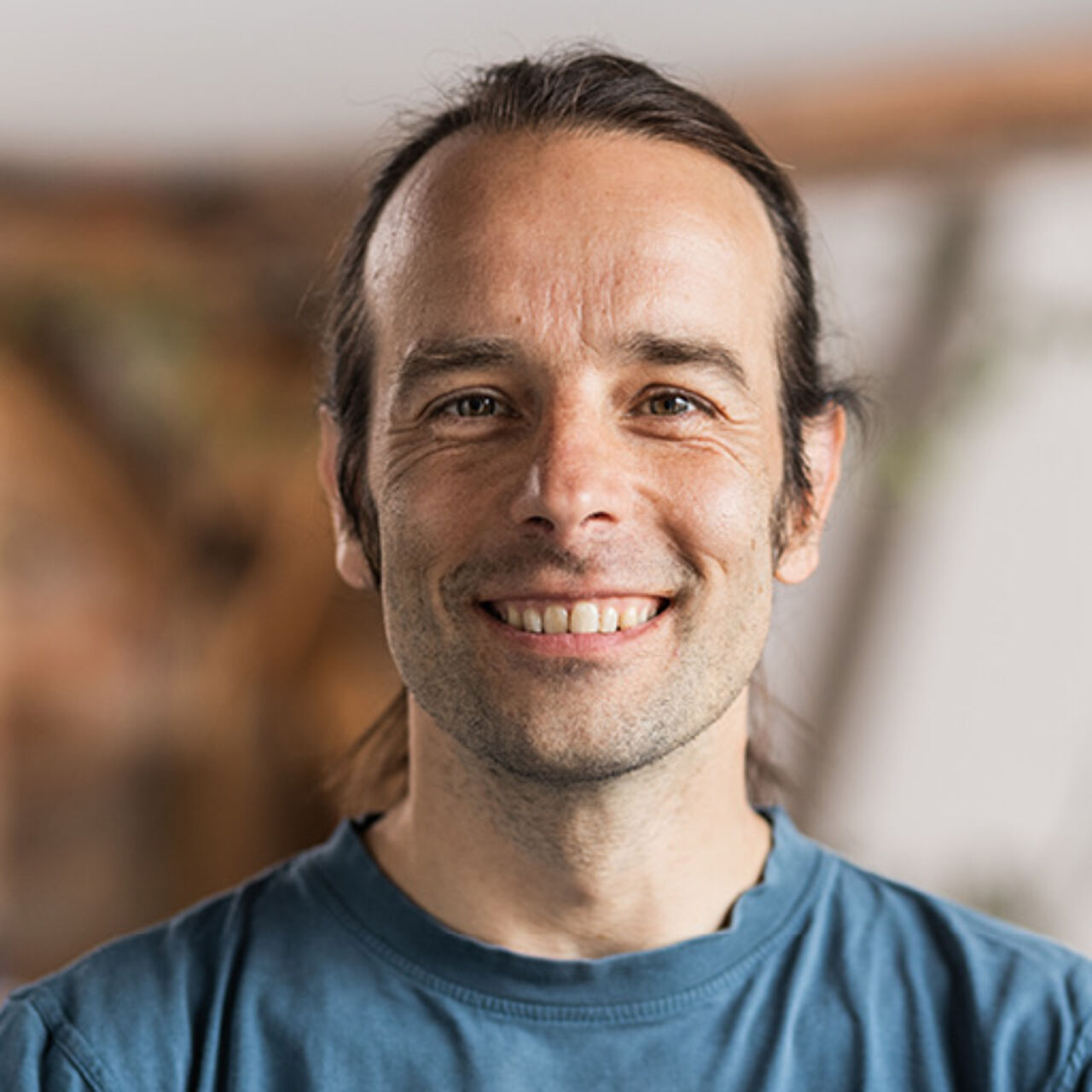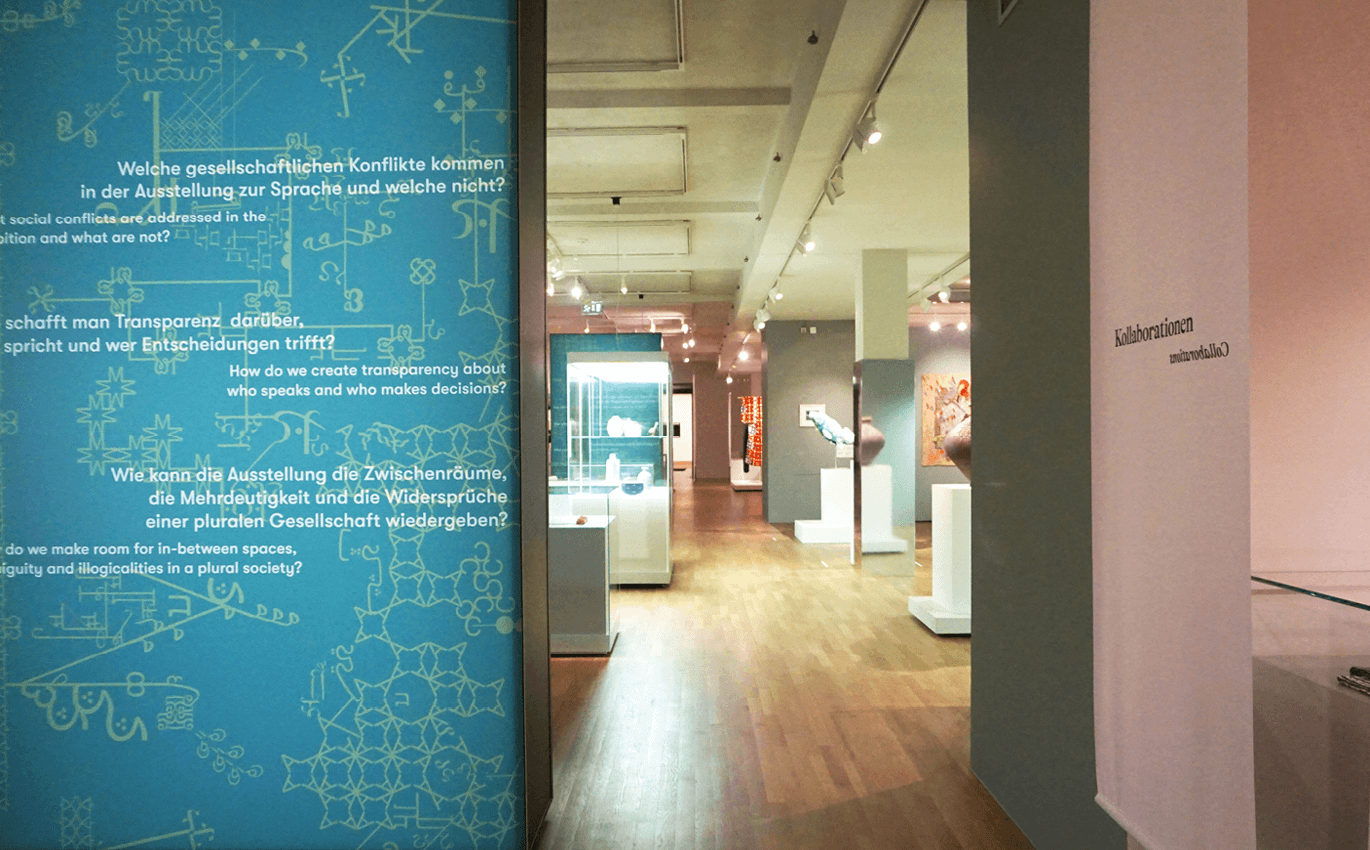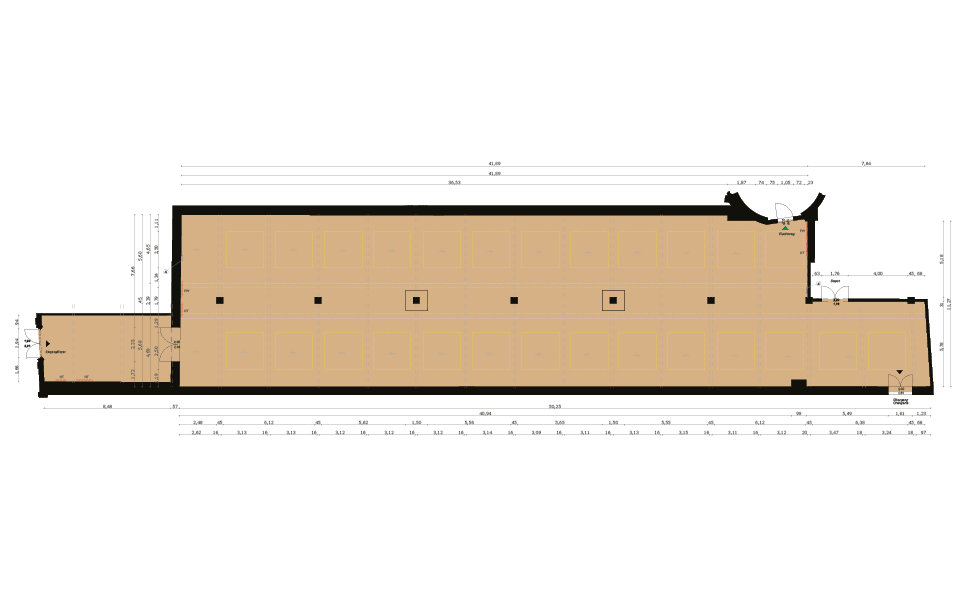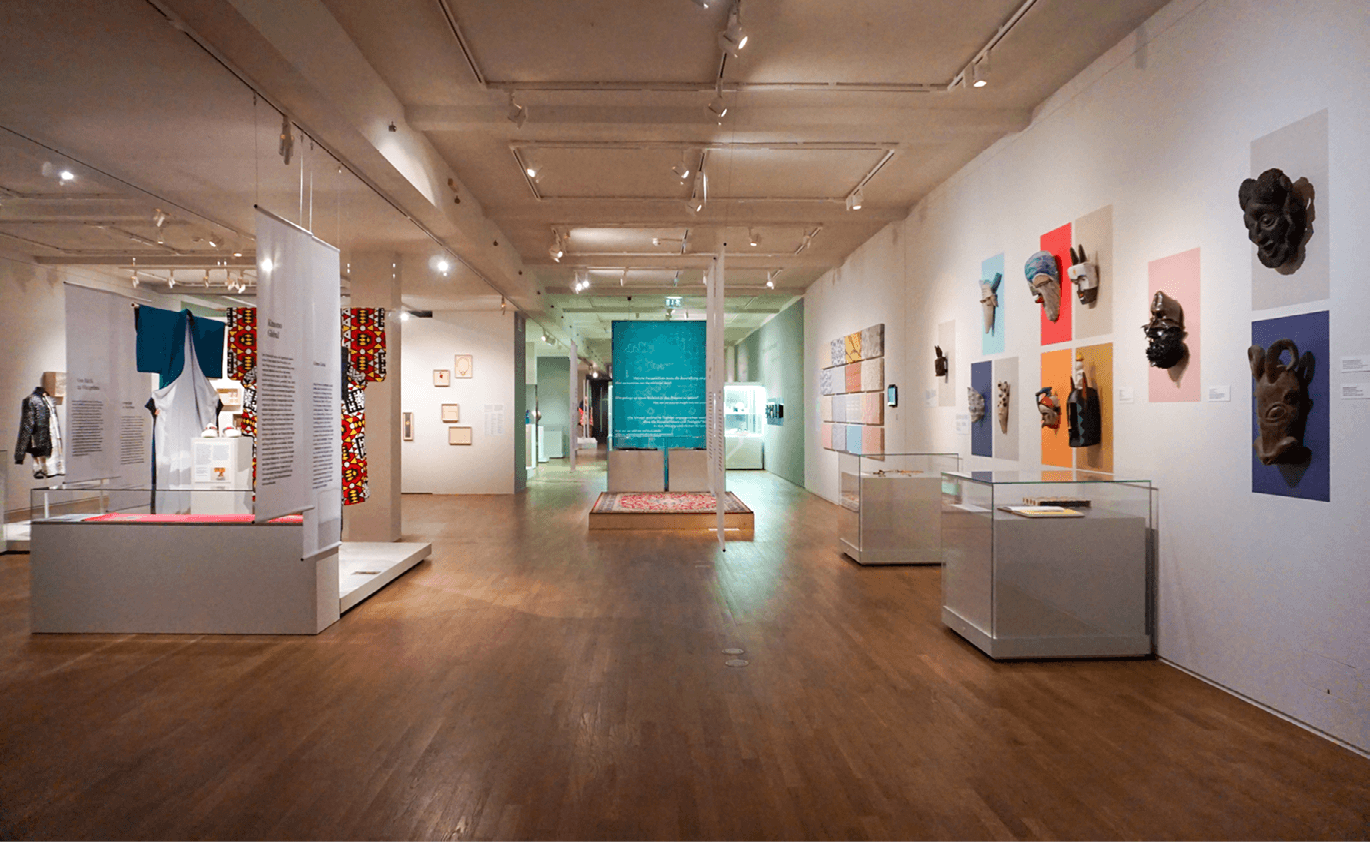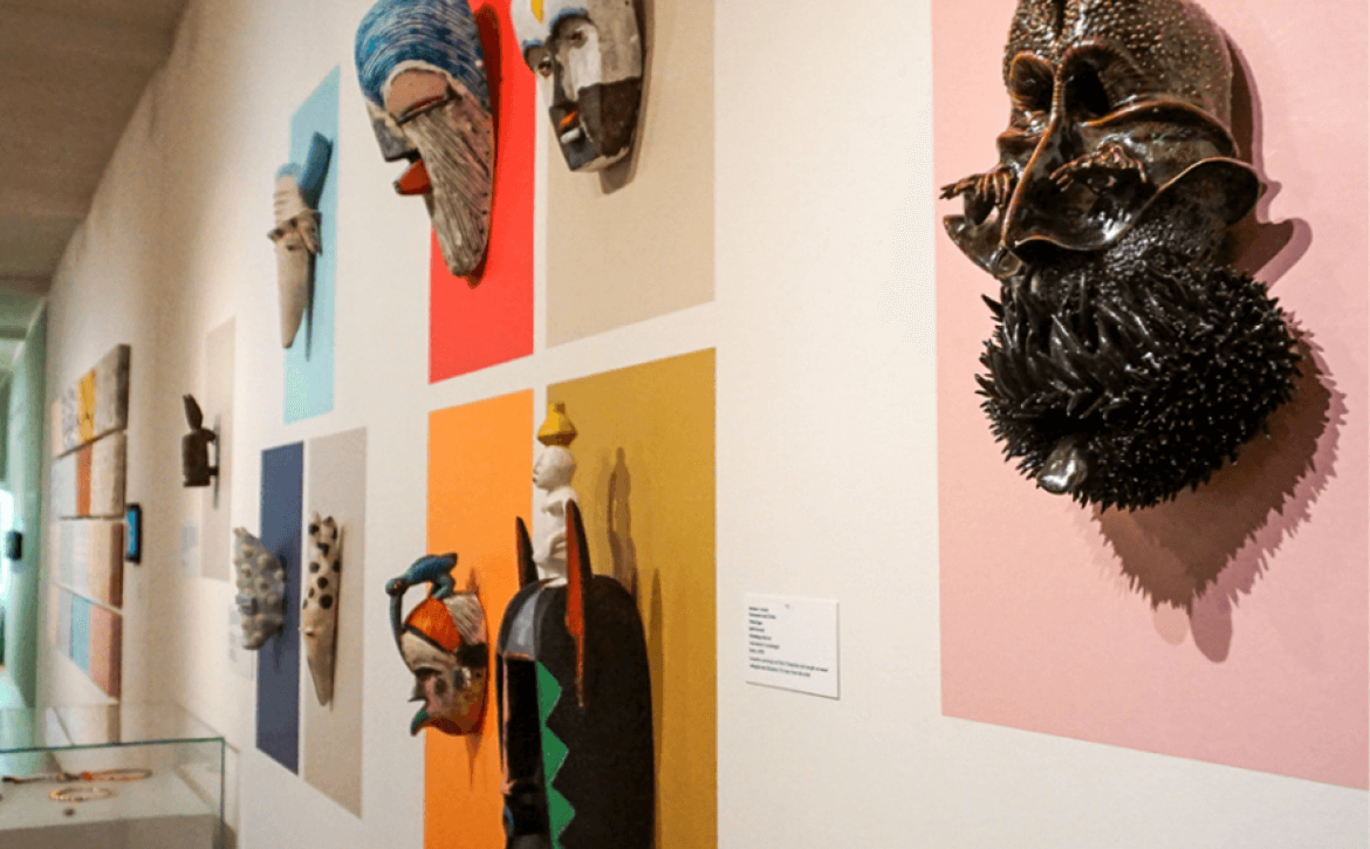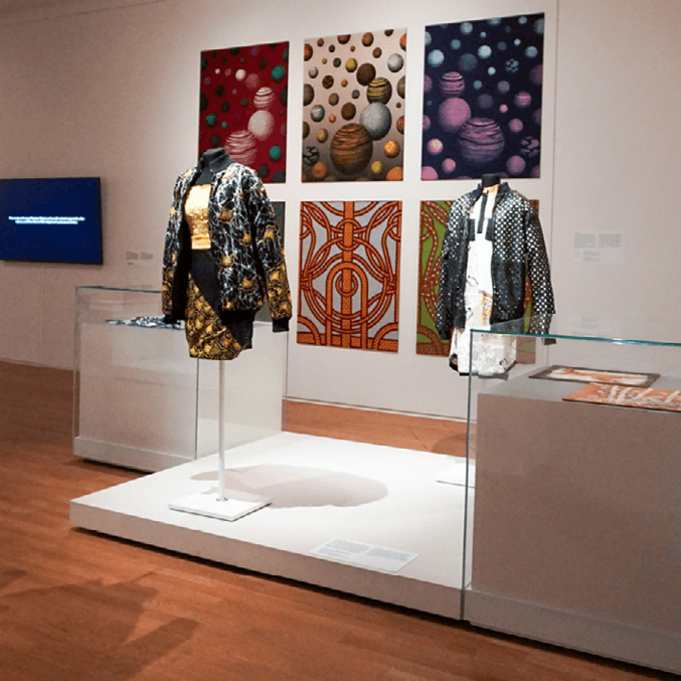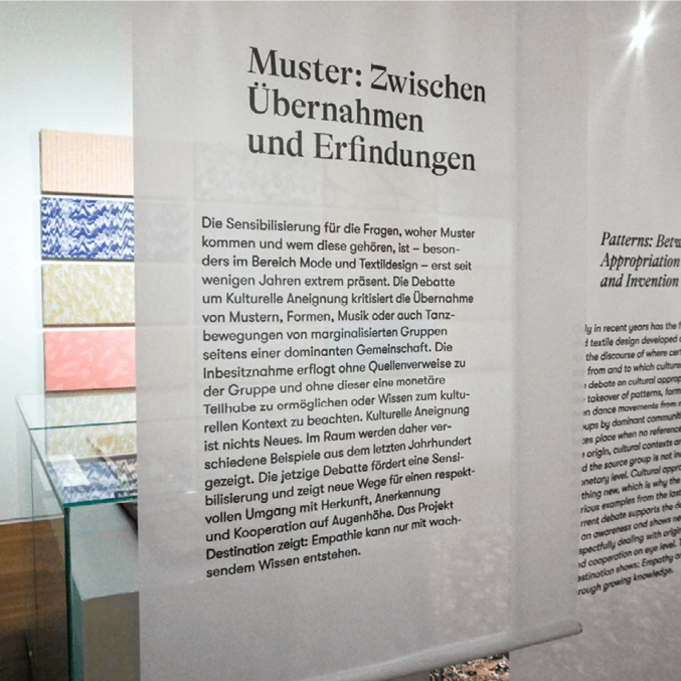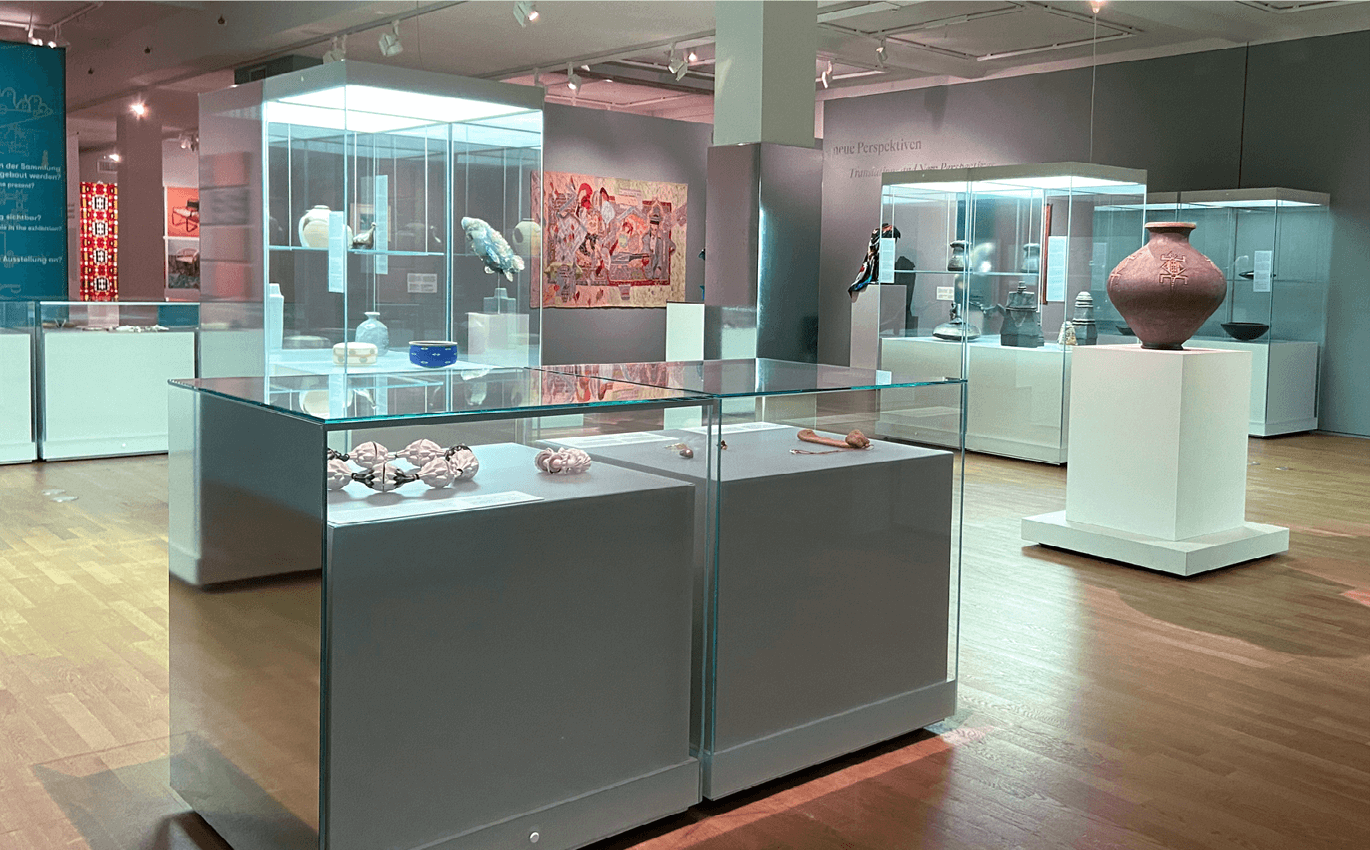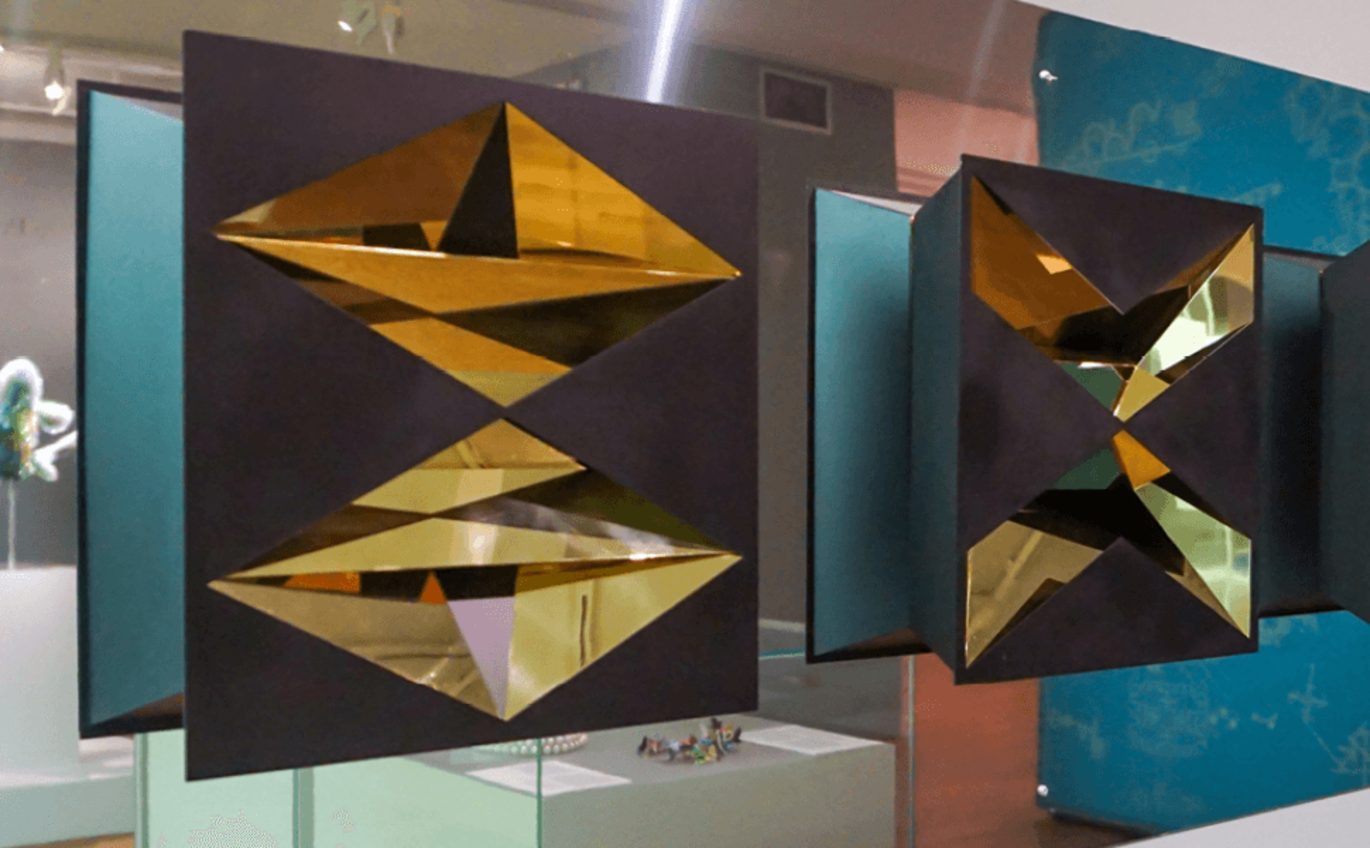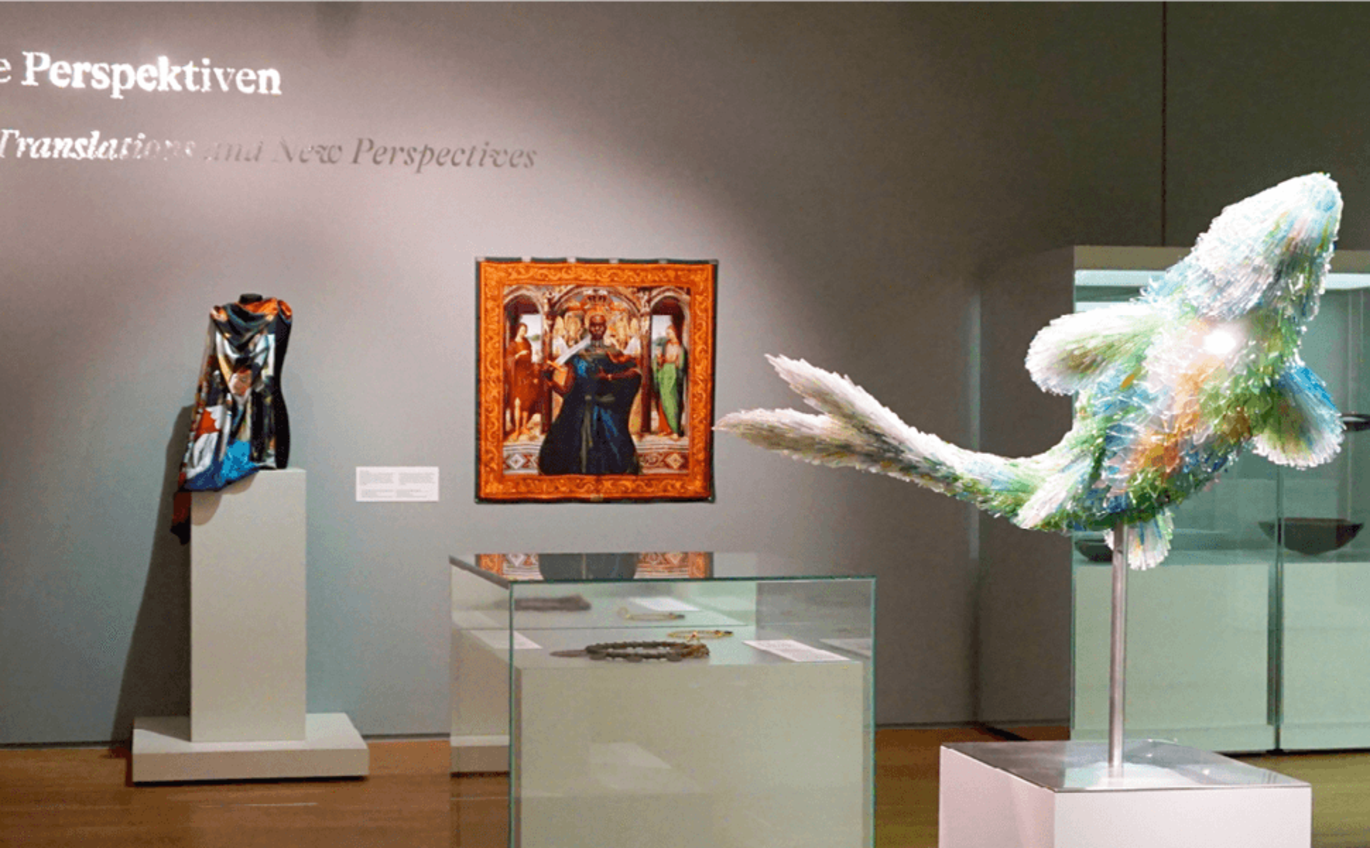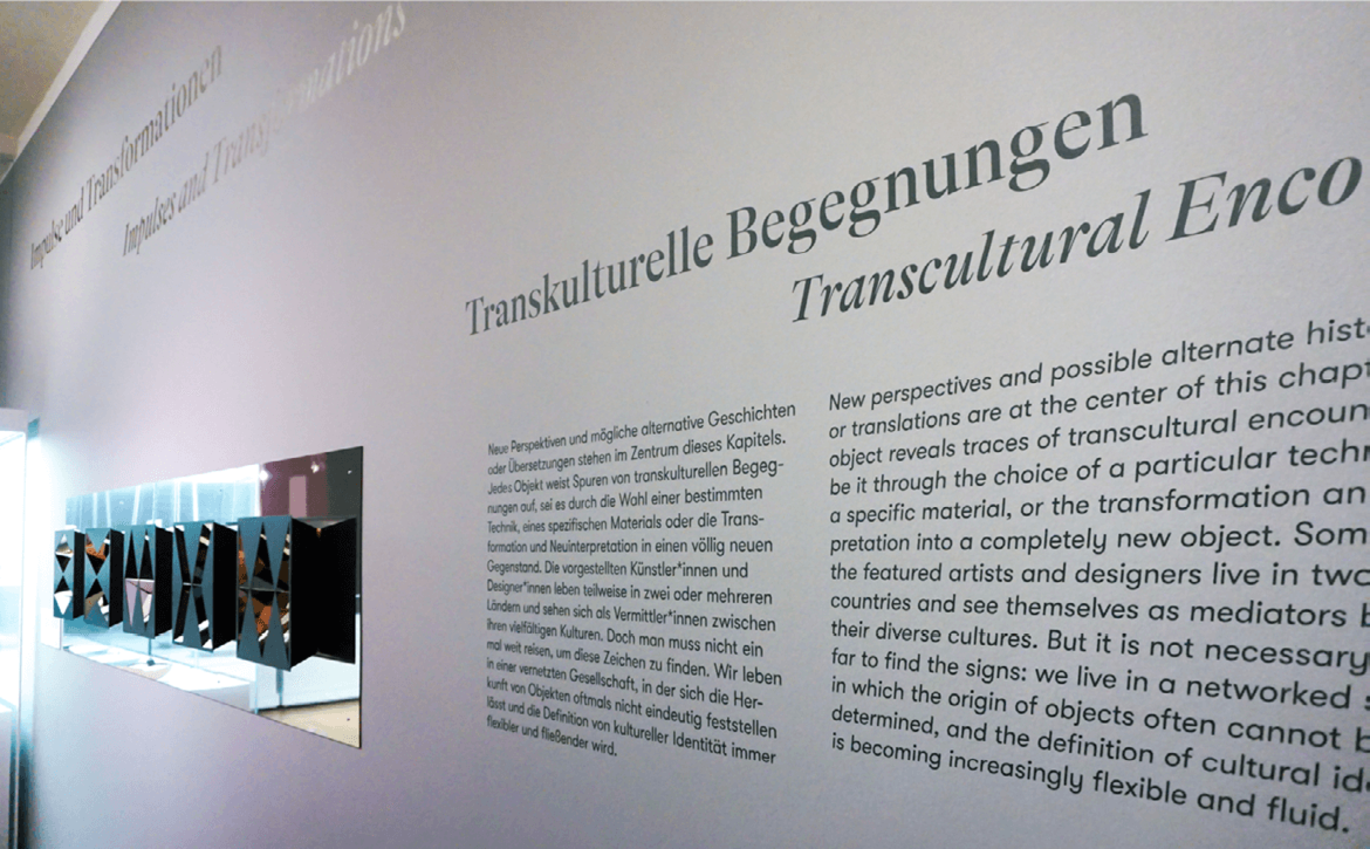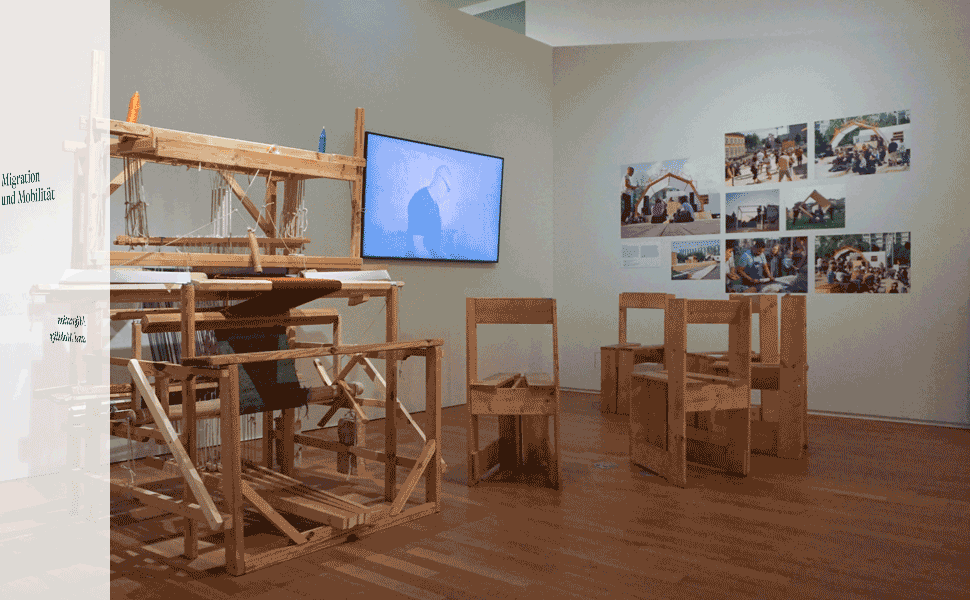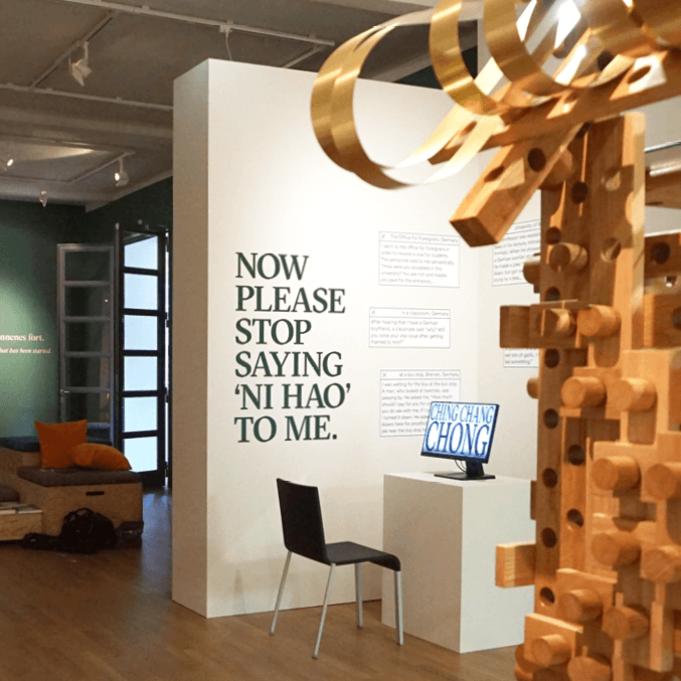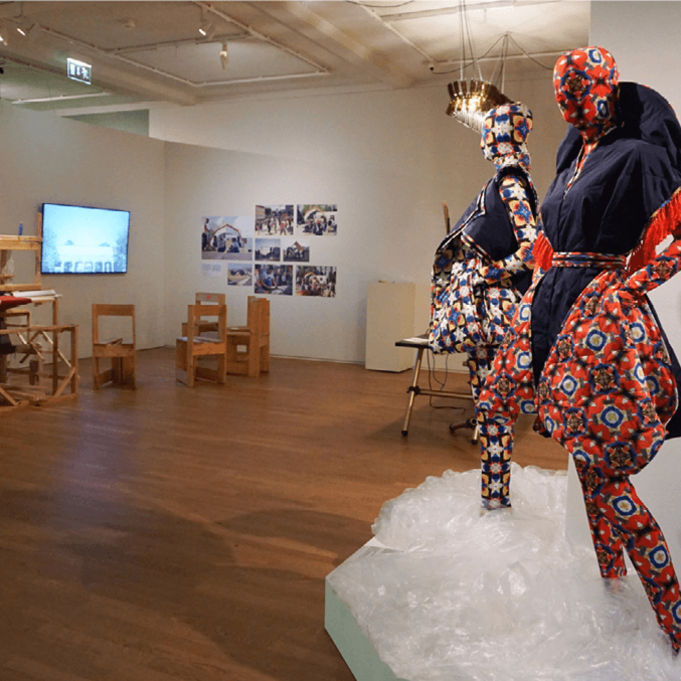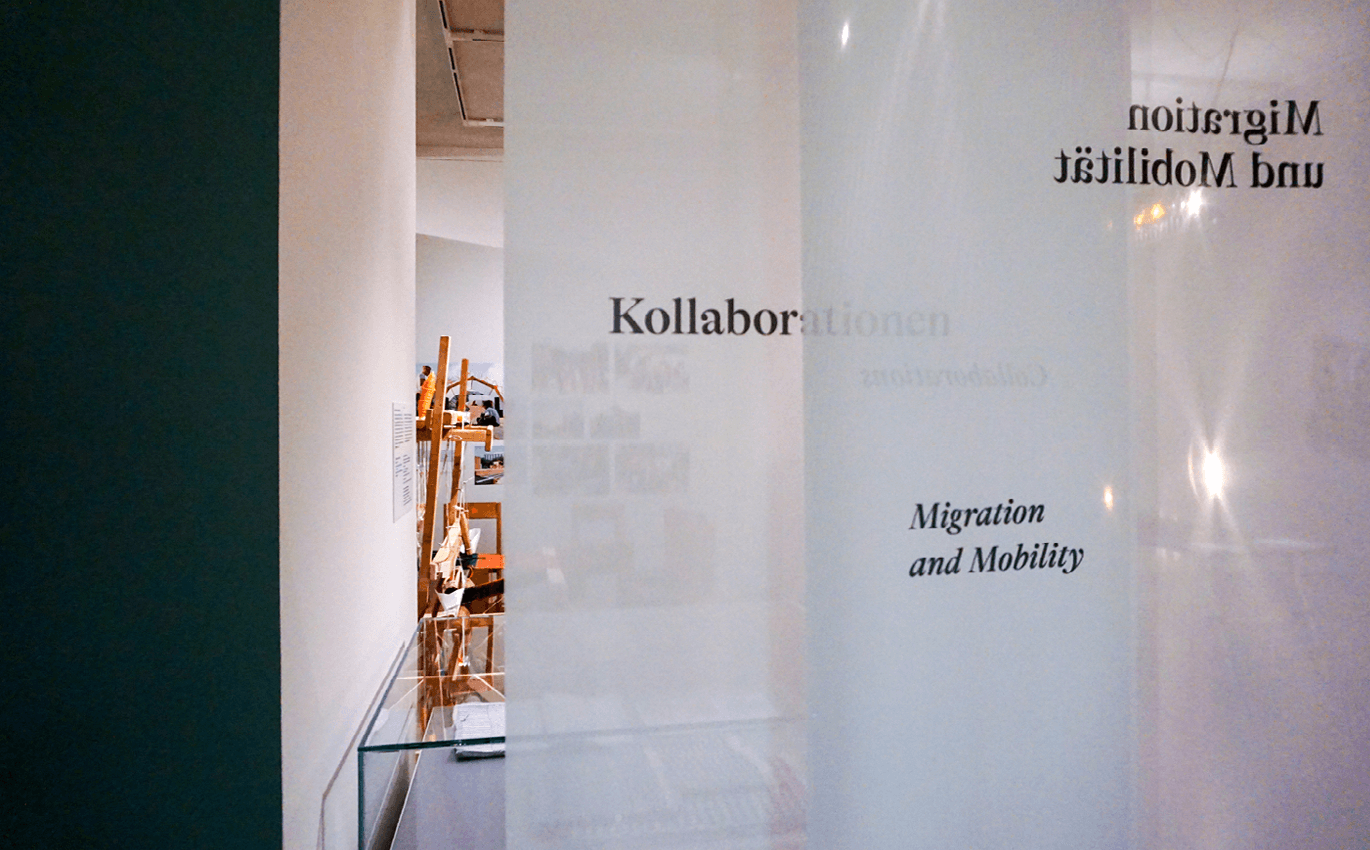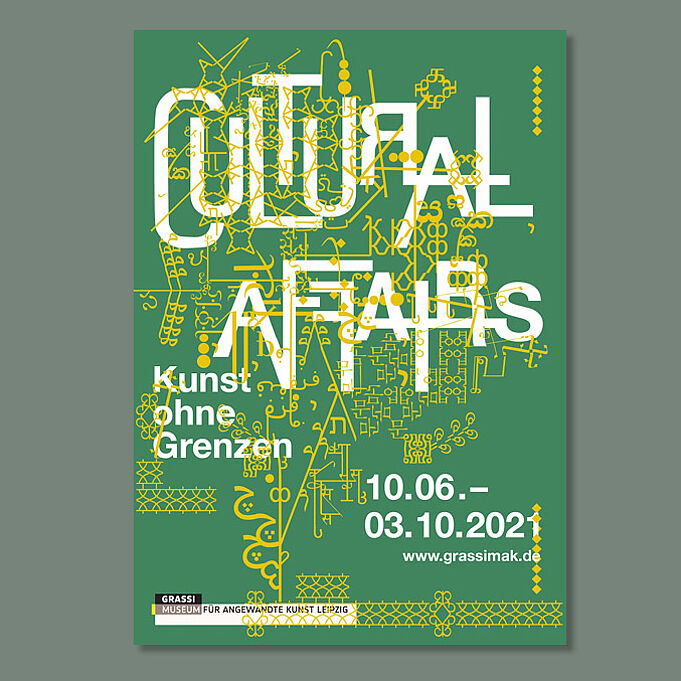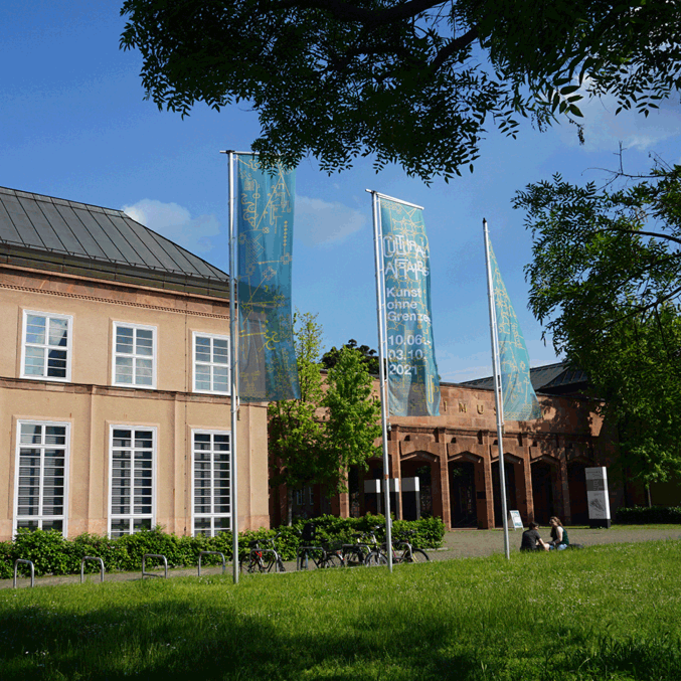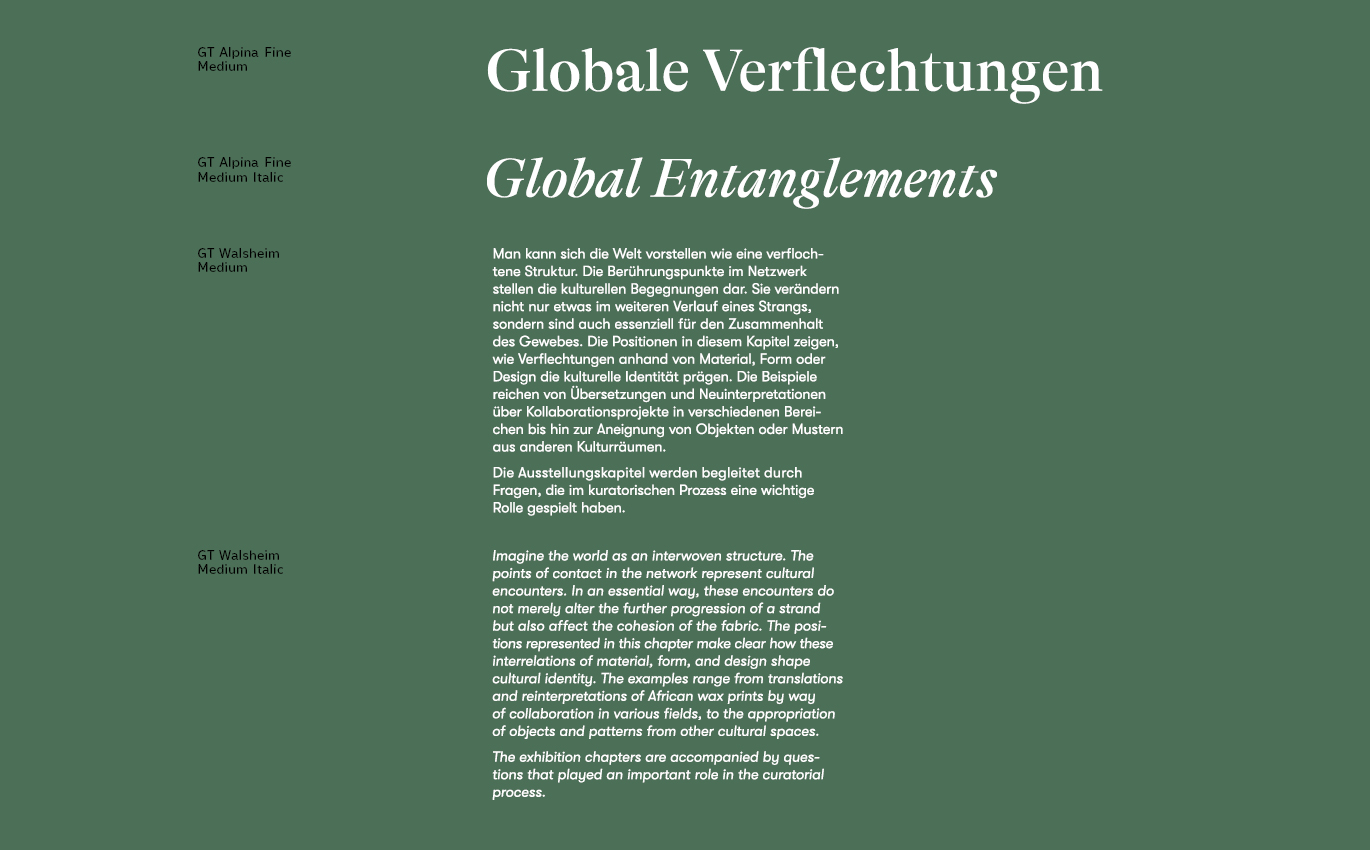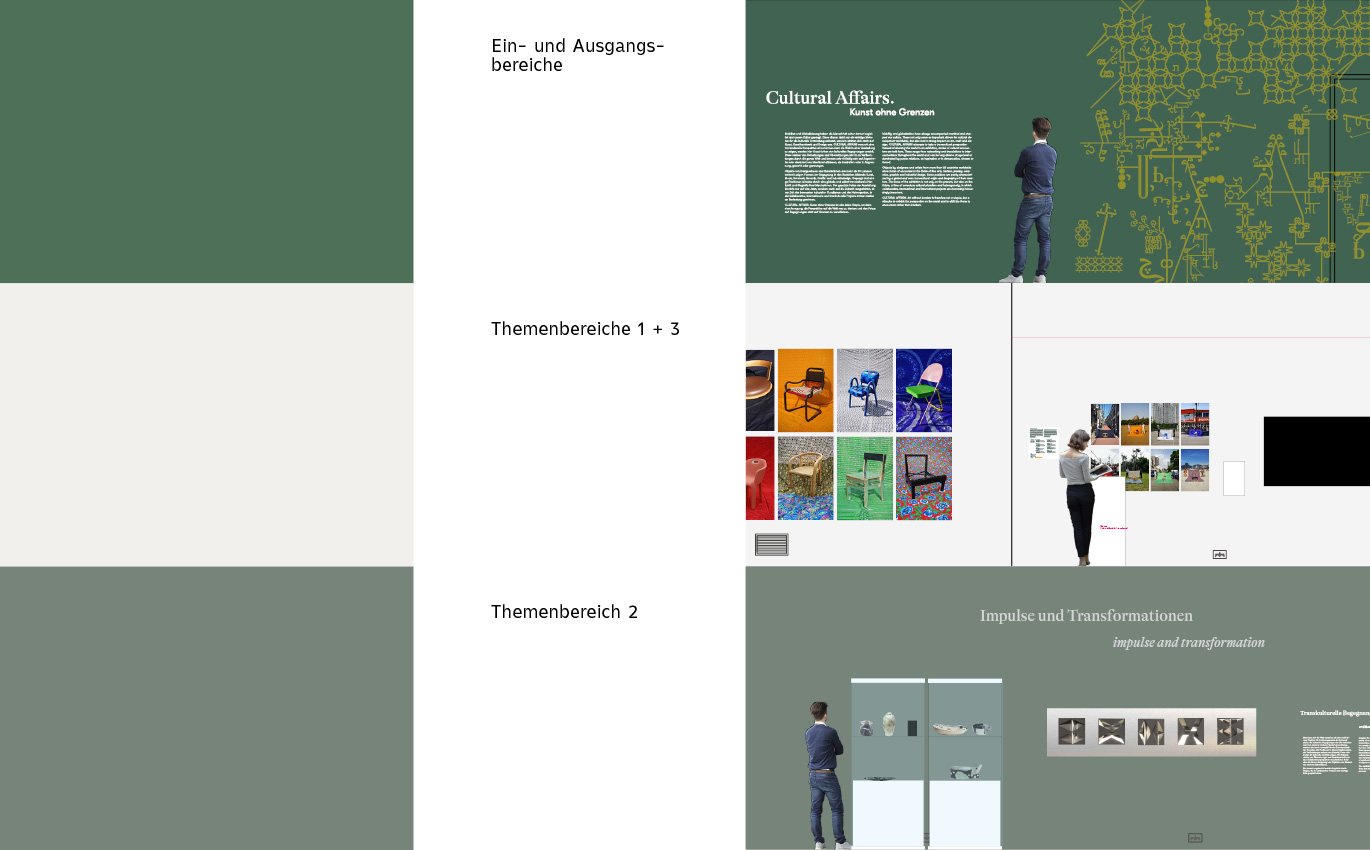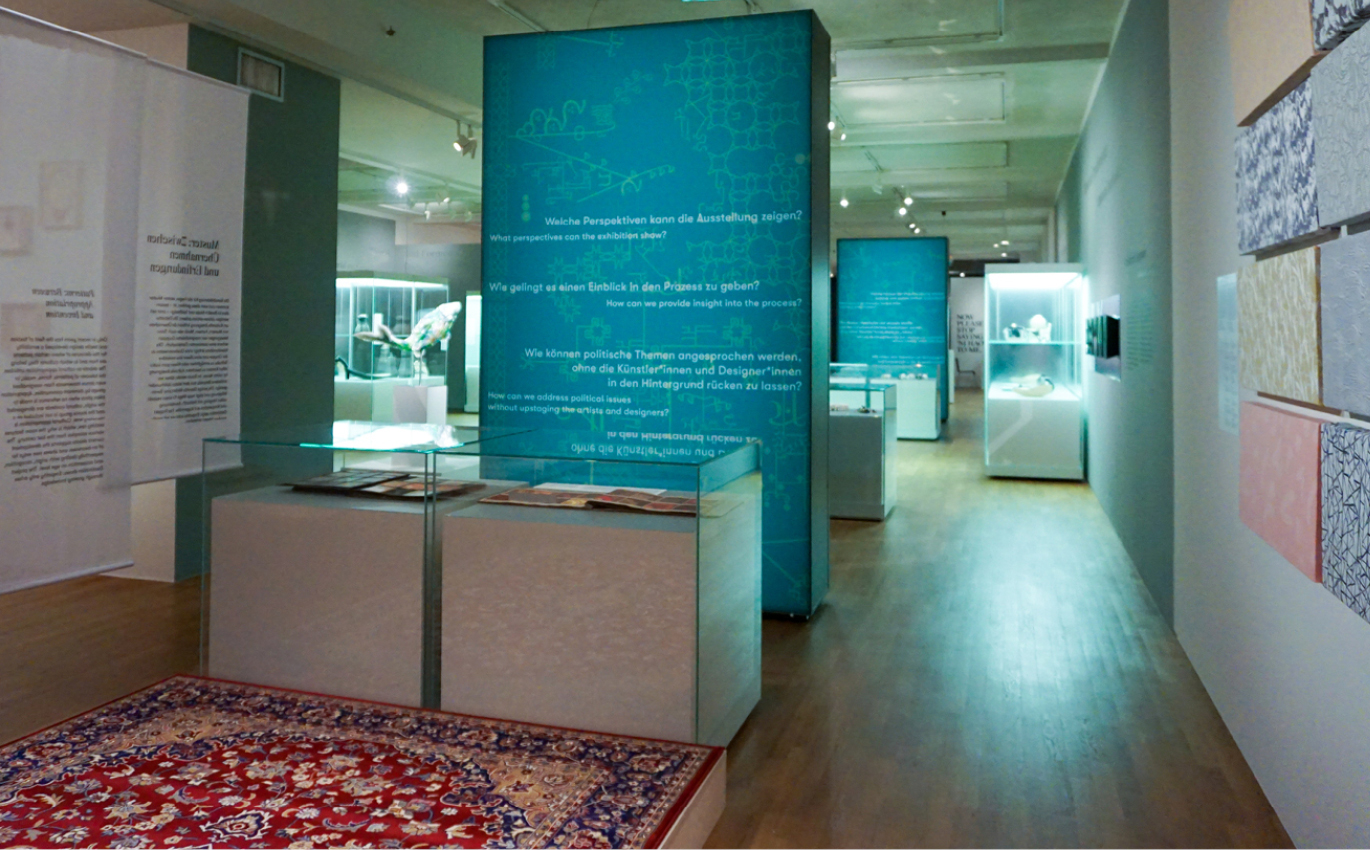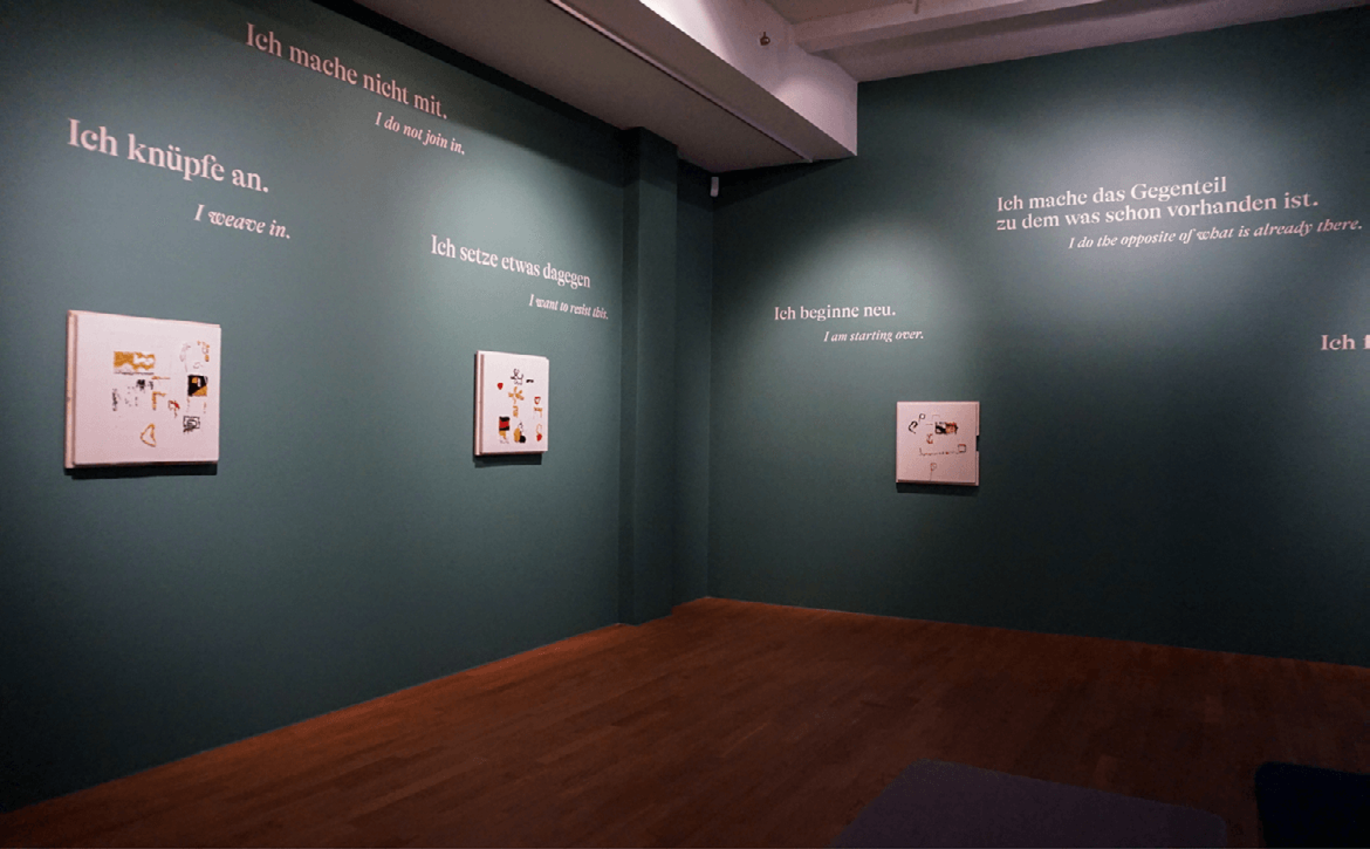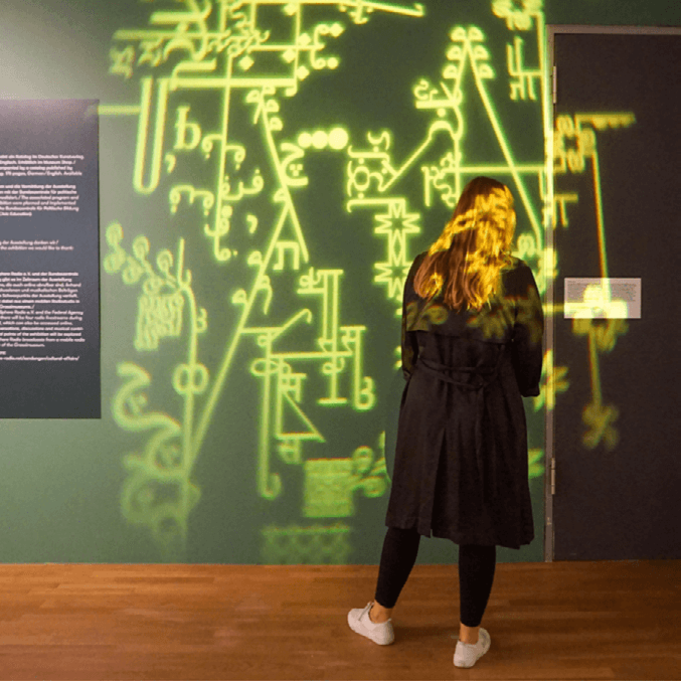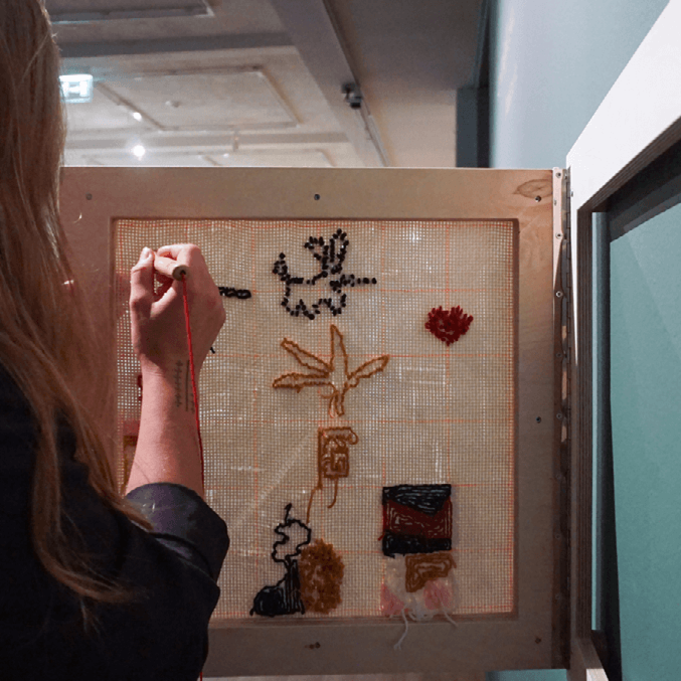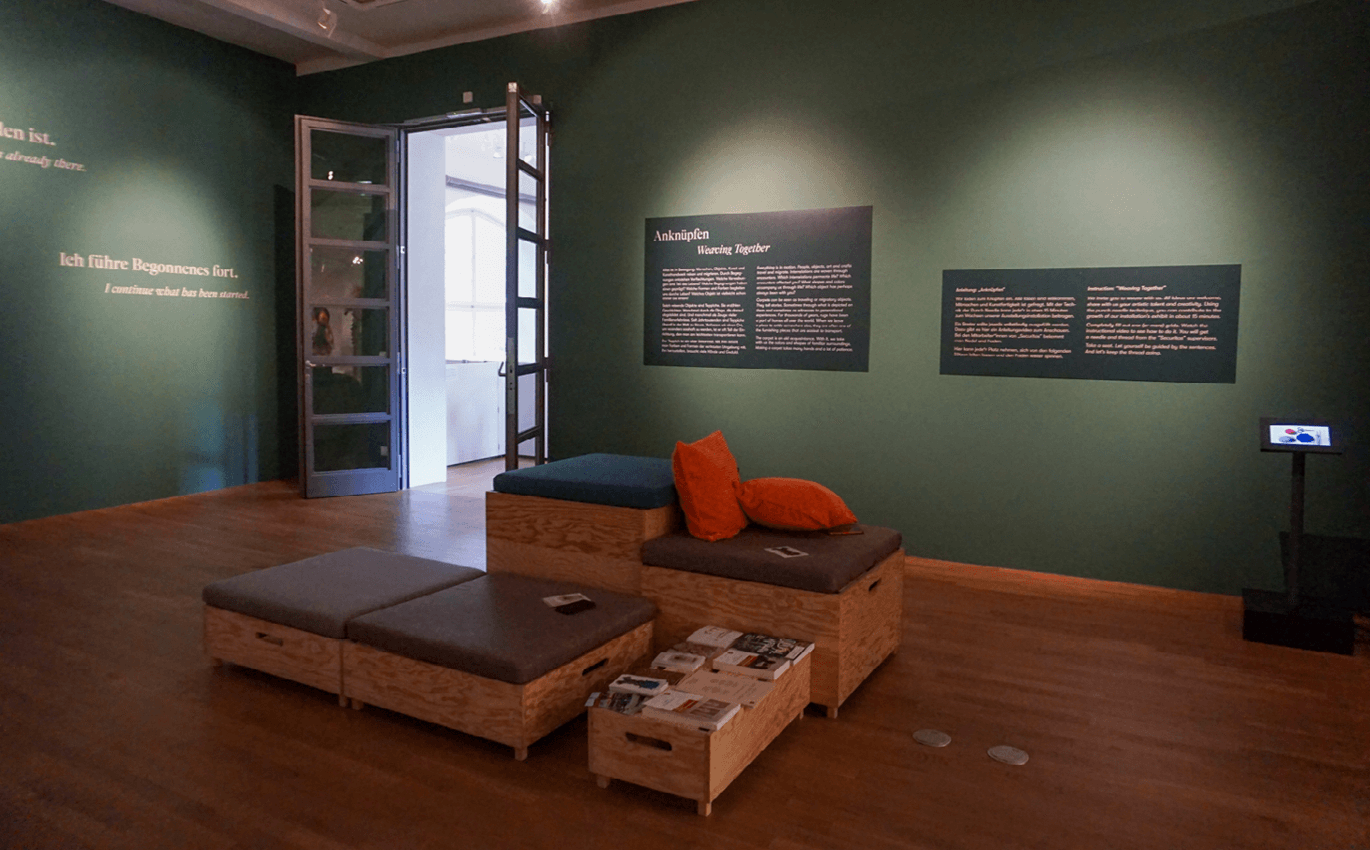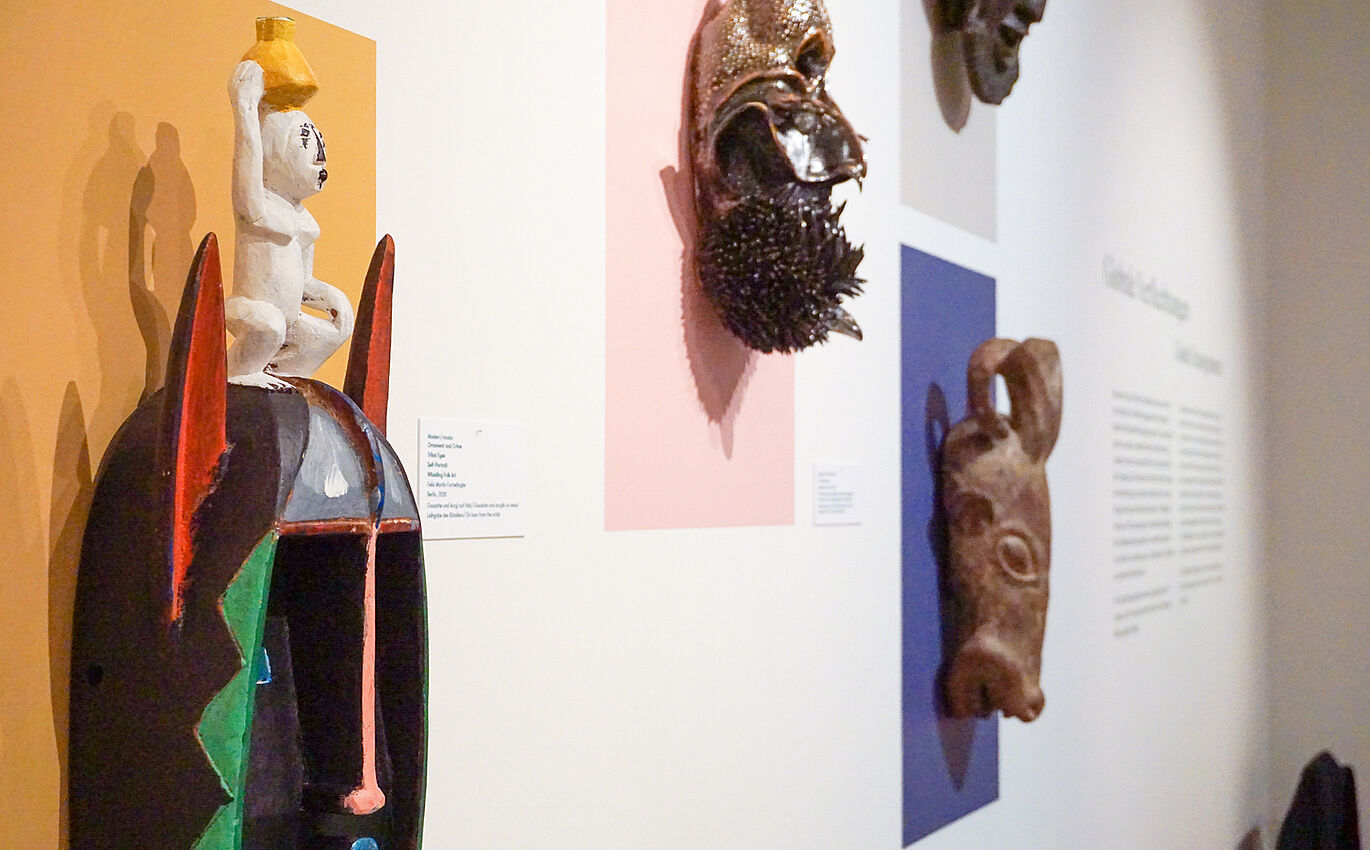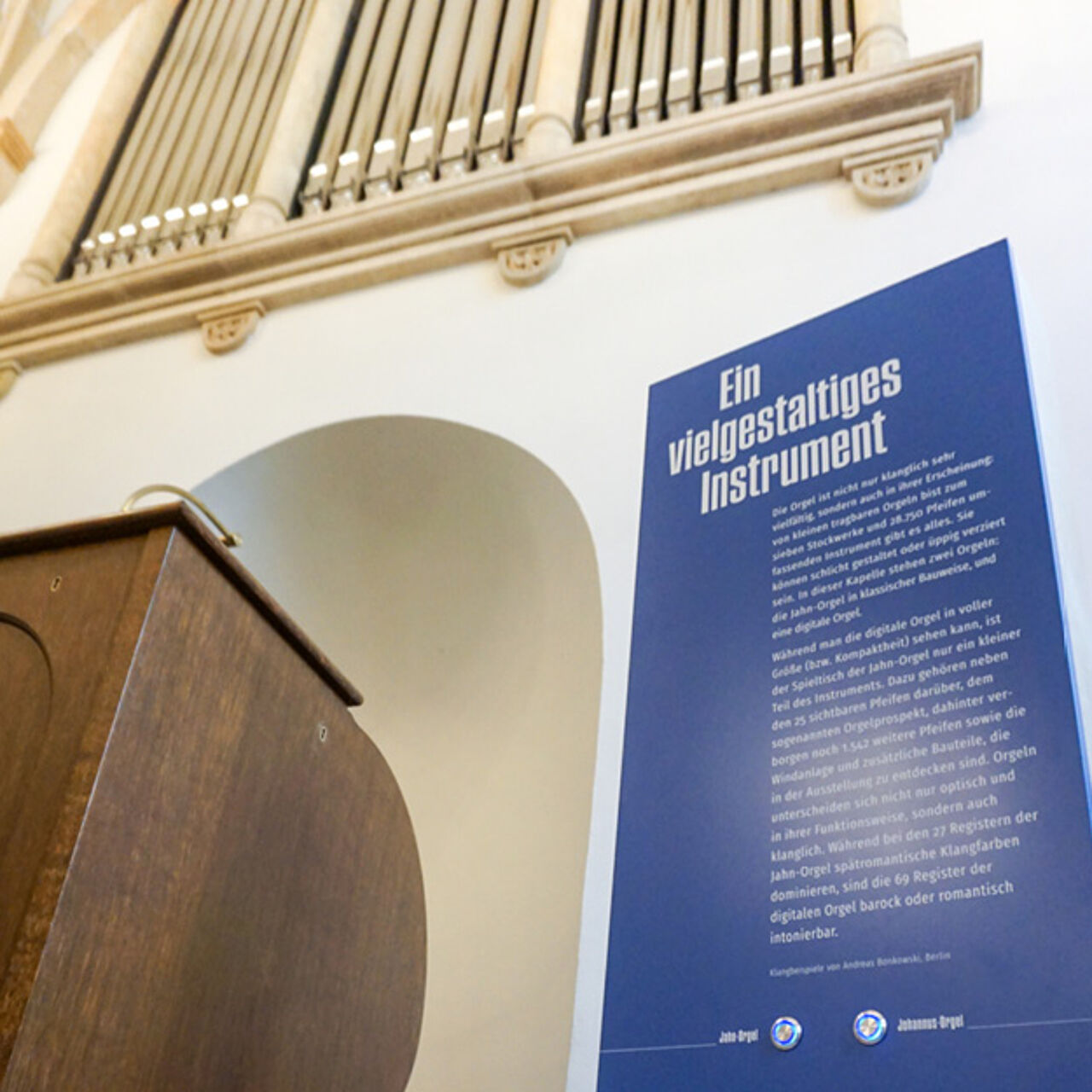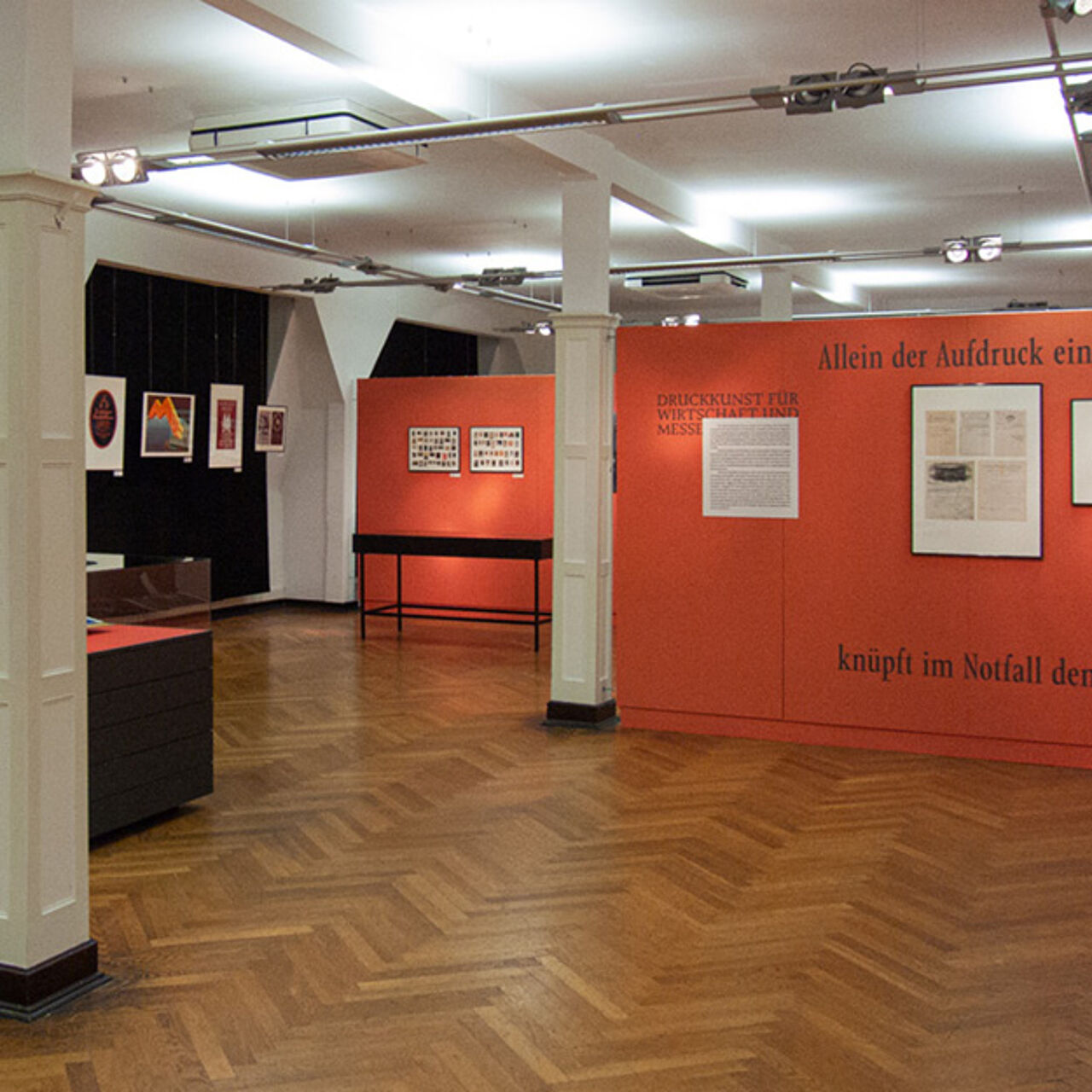- Exhibition Design
- Implementation
The GRASSI Museum für Angewandte Kunst is one of Europe's leading museums for design and applied arts. It presents a diversity of exhibitions on art, crafts, design, photography, and architecture. CULTURAL AFFAIRS was a special exhibition that dealt with the complex themes of cultural networking and exchange in a globalized world.
This exhibition design was our first commission for a museum with a strong focus on auratic exhibit presentation- and with a net area of over 800 square meters, our largest exhibition to date. The multi-layered and sensitive topics demanded absolute sensitivity - also in the design. It was particularly challenging to bring the many differing types of content-related exhibits (expansive individual exhibits to small-scale groups of works, fabrics, everyday objects, photographs, sculptures, digital works, and physical and digital documentation) into an overall aesthetic context.
Together with curator Silvia Gaetti, we approached the exhibition design from a spatial perspective. We divided the elongated hall body into three thematically independent, square sections with partition walls. For each zone, we derived the placement of the exhibits from the thematic focal points of the exhibition concept and implemented them structurally in different ways. We needed to have concise and unique visual axes and a variety of guidance options for visitors. A discreet variation of the wall and font color underlined the respective spatial feeling.
Entitled Global Interweavings, the first area presented artistic explorations of the mixture and translation of different cultural influences. The artists worked on contrasting and colorful objects from different cultural perspectives. The clash of visual cultural identities produced unpredictable results and expressive exhibits. We translated the idea of clash scenographically into thematic islands. They consisted of groups of works that- through free routing- are intermingled with displays visible in the background on the walls. Thus, visitors were given endless possibilities to contextualize. Fabric panels hanging from the ceiling carried exhibition texts, concealing some fields of vision and surprisingly revealing others.
Transcultural encounters can trigger transformation processes. They often happen unexpectedly, by chance, and were the theme and title of the second area. It had significantly more to display than the visually calmer exhibits. Our fundamental design idea was to condense the spatial situation for a feeling of closeness and an intimate encounter. To achieve this, we used a darker room color, mirrors as reflective surfaces, and denser wall hanging and placement of the display cases. We also made the walkway narrower than in the first area. However, we still left the visitors free to choose their path. Full-sided mirror film on the showcases allowed the small-scale exhibits to be viewed from several angles simultaneously, broadening their perceptible perspectives.
The third area was named World on the Move. It presented artistic explorations of today and tomorrow in post-migrant societies. Diverse exhibits address global mobility, cultural identity, and concomitant phenomena of social change. We installed ceiling flags that flowed slowly through the length of the room to symbolize the constantly changing paths of cultural exchange. Visitors only noticed the fluid spatial situation at a second glance, for example, when a line of sight or pathway became obscured. To structure the elements, we resorted to a mixture of exhibit groups and exposed individual objects.
For the color and type design of the exhibition, we drew on the styling of Dona Abboud's exhibition graphic. Our exhibition design quoted the font and color tone and transferred them into the space. Shades of green provided structure and direction through the individual sections of the exhibition. We used the fonts from the advertising poster and exhibition catalog for all text elements in the exhibition.
In addition to an excellent exhibit presentation, the curator wanted to integrate information and impulses for further engagement with the exhibition. One solution was the guiding questions of the exhibition concept on larger-than-life lightboxes. We placed two of these lightboxes at the transition of the individual exhibition sections.
We designed the relatively small anteroom to be dark. Inside, we staged the bilingual exhibition introduction, a light installation of the ornament of the exhibition graphics, and an interactive exhibit of the Federal Agency for Civic Education. The change from narrow-dark (anteroom) to wide-bright (first thematic area) sent visitors on a journey of discovery. The exit area of the exhibition borrowed the dark and moody color from the entrance. Its atmosphere served as a place of rest and reflection. Together with the museum staff, we developed and installed punch needle frames for use by visitors. An essential addition in the center of the room was the seating area.
Due to their versatile materiality and nature, the joint presentation of arts and crafts exhibits is an exciting challenge. If a single exhibit changed during the process for curatorial reasons, we would find new solutions and forms of presentation. Some artworks we discovered only at the time of delivery by the artists. Thanks to the cordial and open-minded cooperation with the curator Silvia Gaetti and the production manager Thomas Camphausen, such a flexible approach to the existing circumstances made for an instructive and enjoyable collaboration for us throughout.
